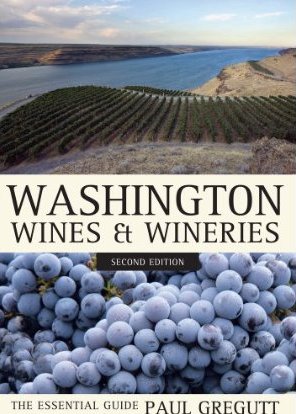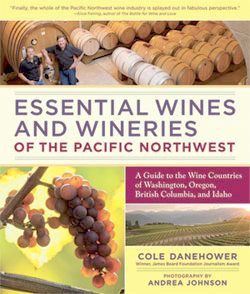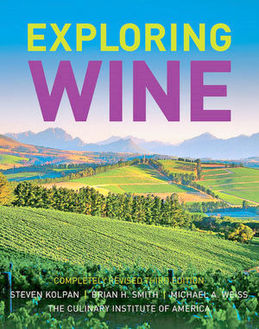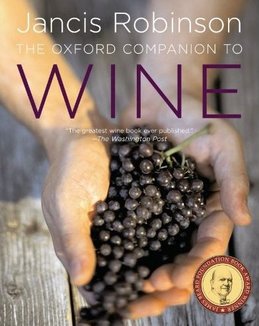 As the wine guru at the Seattle Times, Paul Gregutt is the best-known wine writer in the state. Three years ago, to great acclaim (including this review on Cornichon), he published his "essential guide" to Washington wines and wineries.. The second edition, just released, provides a few necessary updates and several welcome refinements.
As the wine guru at the Seattle Times, Paul Gregutt is the best-known wine writer in the state. Three years ago, to great acclaim (including this review on Cornichon), he published his "essential guide" to Washington wines and wineries.. The second edition, just released, provides a few necessary updates and several welcome refinements.
For starters, Washington now has something like 650 bonded wineries, and nothing short of a phone book is going to be all-encompassing. Instead, Gregutt focuses his attention on the 200 or so wineries that offer quality and innovation (double the number in the first book). His first edition named 13 "leaders," 30 "specialists," followed by "bench" wineries and "rookies." The industry keeps growing, and now it's time to reassess. The top rank is now called "Five Stars" and includes 10 newcomers. One "leader," Matthews Cellars, has been kicked off the field, persued by unhappy investors. A second, Hedges Family Estate, was demoted (unfairly, in my view), compromised perhaps by becoming too popular. Even so, Chateau Ste. Michelle retains its spot despite (deservedly in my view) its commercial success). Eyebrows may well be raised by the promotion of K Vintners to five-star rank, especially since Charles Smith Wines (same owner) already has a (gulp) four-star rating. It's good to see Brian Carter promoted from rookie to four stars, good to see Fielding Estates awarded top rank despite its lack of a modern winery, good to see attention focused on Corliss (four stars for now) for the potential of its financial underwriting.
The star of the book is not a winery but a place, Red Mountain, an unpreposessing, "brownish lump of half-baked bread" at the eastern end of the Yakima Valley. It's the most homogenous of Washington's delimited growing zones (referred to as American Viticultural Areas), and, at 4,000 acres, the smallest. The Department of Natural Resources has sunk a couple of deep-bore wells to irrigate the vineyards, which supply grapes to 15 estate wineries on the mountain and to buyers around the state.
There are thousands of vineyards growing dozens of grape varieties in the state's 11 AVAs, and some, to be sure are better than others. Some have natural advantages of place, others are exceptionally well managed. You can't say the same of a commodity crop like corn, for example; vinifera grapes are the essential raw material for fine wine, and it takes experience to spot the potential of great cabernet, say, "on the hoof." The top vineyards in Gregutt's book are Boushey, Cayuse, Celilo. Champoux, Ciel du Cheval, and Klipsun. Not household names, except to wine geeks who understand that it's the vineyard, more than anything else, that determines what a wine will taste like. All wine starts in the vineyard; the winemaker's job is not to "craft" the wine but to stay out of the way. ("Crafting" is what you do after you've screwed up.) Then it's the marketing department's job to sell the bottles. (That's where Charles Smith of K Vintners excels.)
It's a well-written, well-edited book that should be read for more than reference material. Wonderful anecdotes, for instance. Industry veteran Allen Shoup weighs in on the high price he paid for the experimental Wallula Vineyard, with a spectacular view overlooking the Columbia River. The Den Hoed family had planted a dozen "lesser" varieties (barbera, dolcetto, tempranillo) on its small, terraced plots; Shoup renamed it The Benches and will use its grapes for his new Longshadows venture: "It's too valuable for experimenting."
Gregutt is a scrupulous writer (you've got to read his blog) and humble reviewer, who, like a plate umpire, does no more than call them as he sees them. You want to quibble over his numbers, you're out of luck; Gregutt is pretty much the only game left. National bigshots from the syndicated newsletters blow into town from time to time and anoint their predictable favorites, but Gregutt's here all year long, writing and tasting. You can live without the new edition, but only if you have the original. To have both is like having a second case of Leonetti for everyday drinking, an embarrassment of riches.
 Cole Danehower's book flaunts the "Essential" in its title, and profiles 160 wineries in Washington, Oregon, and Idaho as well as British Columbia, though it sometimes reads more like a travel guide than a critical reference work. The regional summaries are better than the cursory profiles, full of one-liners ("Hummer limousines are no longer out of place" in Oregon's Willamette Valley). In addition to descriptions of each region's geographical particulariities ("terroir), he includes a thoughtful look at what climate change might mean for vineyards in the Northwest. Danehower is the publisher of Northwest Palate, a fine magazine that watches over the region's food and wine from a base in Portland, and has over a decade of experience as a writer and wine judge. I'm not sure I'd call the book indispensable, but it's a useful addition to a wine-lover's library.
Cole Danehower's book flaunts the "Essential" in its title, and profiles 160 wineries in Washington, Oregon, and Idaho as well as British Columbia, though it sometimes reads more like a travel guide than a critical reference work. The regional summaries are better than the cursory profiles, full of one-liners ("Hummer limousines are no longer out of place" in Oregon's Willamette Valley). In addition to descriptions of each region's geographical particulariities ("terroir), he includes a thoughtful look at what climate change might mean for vineyards in the Northwest. Danehower is the publisher of Northwest Palate, a fine magazine that watches over the region's food and wine from a base in Portland, and has over a decade of experience as a writer and wine judge. I'm not sure I'd call the book indispensable, but it's a useful addition to a wine-lover's library.


Going further afield, a massive guide to all the wines in the world has landed with a thud. It's Exploring Wine, cranked out by three writers from the Culinary Institute of America. The cover illustration shows the magnificent vineyards of South Africa, so you know this isn't full of parochial Old Guard bluster. The third edition weighs in at 7 pounds and 782 pages (with a number of regrettably washed-out photos) and clearly has its sights set on Jancis Robinson's encyclopedic, 1,088-page Oxford Companion to Wine. The difference between American and British approaches couldn't be more evident. Robinson, a brilliant, London-based scholar and expert taster, is also a frequent visitor to the Pacific Northwest, her entries on Oregon and Washington, in the first edition (1992) were brief but optimistic. (Disclosure: she cited one of my books as a reference.)
Exploring Wine is a breezy approach to a vast subject, rambling cheerfully in a 20-page chapter titled "Beyond California" through New York State, Michigan, Washington, Oregon, Idaho, Texas, the Carolinas, and Canada. (British Columbia, which deserves much, much better, is dismissed in three paragraphs. India--India!--gets six.) But the book isn't an Old World hymnal; on the contrary, it really does try to put wine into a modern cultural context (there's much more information on climate change, for example). And to redeem its short-shrift of Canada, it prints the table of contents from the wine list at Sooke Harbour House on Vancouver Island as an example of an ideal restaurant wine selection. In fact, the extended section on wine service is probably the most valuable thing in the book, as befits a work published by America's leading culinary academy. For erudition, I'll stick with Ms. Robinson, but Exploring Wine belongs on the same shelf.
- Washington WInes & Wineries: the Essential Guide, 2nd Edition, Paul Gregutt (University of California Press, $34.95)
- Essential WInes and Wineries of the Pacific Northwest, Cole Danehower (Timber Press, $24.95)
- Exploring WIne, Culinary Institue of America's Guide to Wines of the World, (Wiley, $65)
- Oxford Copmpanion to WIne, 3rd Edition,Jancis Robinson (Oxford University Press, $65)
Thanks, Ron. As you know, your books on WA and OR have been an invaluable resource in researching both editions of my own work. One small correction - the number of winery profiles in this new edition has more than doubled - to 225, not 100. Thanks again for the write-up and have a great time in France!